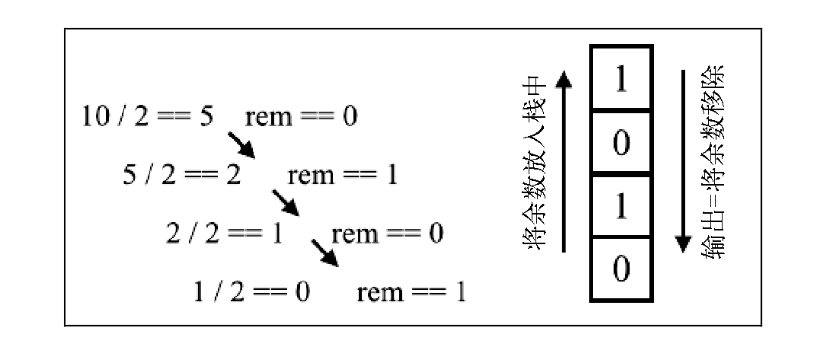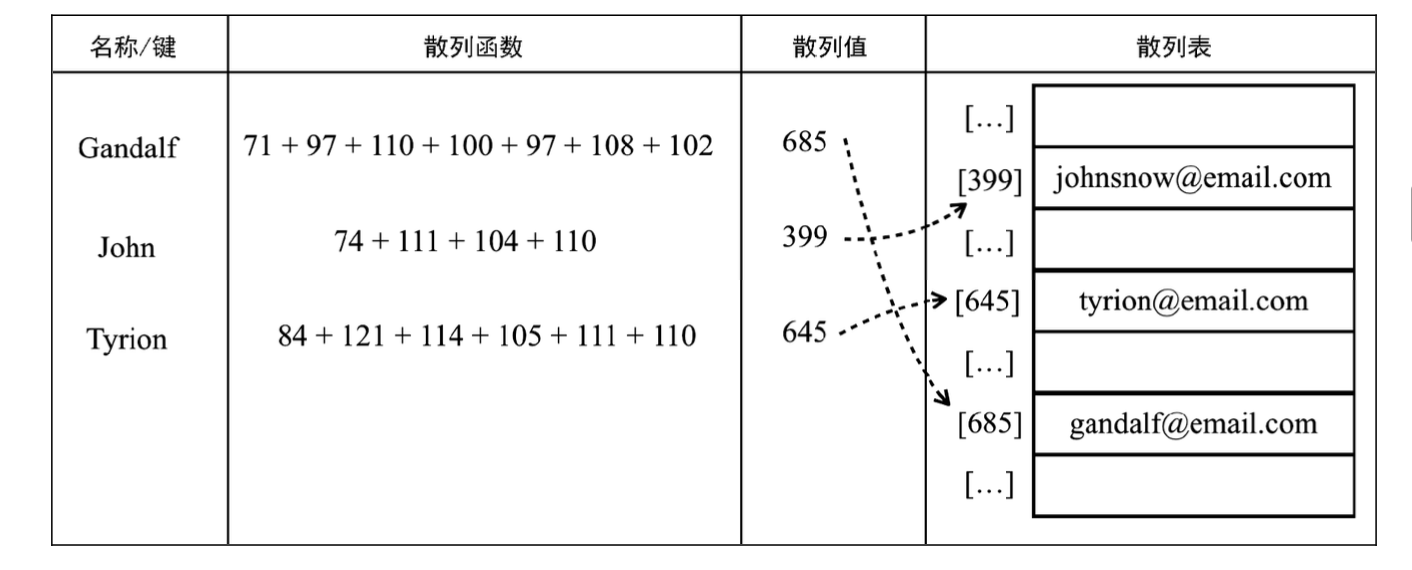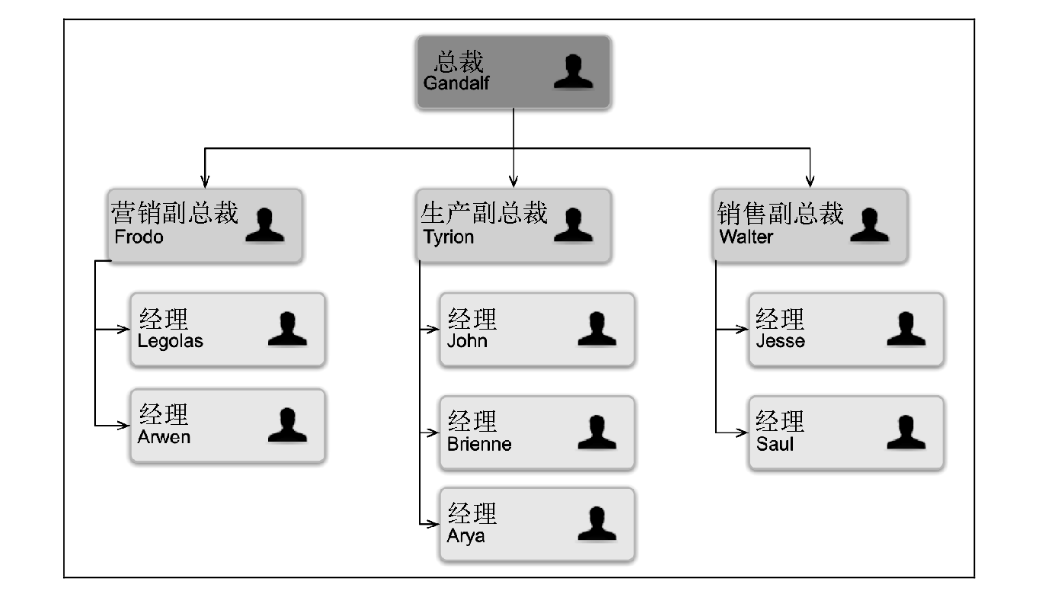学习JavaScript数据结构与算法(第3版)@www.java1234.com.pdf
栈
我们知道,可以在数组的任意位置上删除或添加元素。然而,有时候还需要一种能在添加或删除元素时进行
更多控制的数据结构。有两种类似于数组的数据结构在添加和删除元素时更为可控,它们就是栈和队列。
栈是一种遵从后进先出( LIFO)原则的有序集合。新添加或待删除的元素都保存在栈的同
一端,称作栈顶,另一端就叫栈底。在栈里,新元素都靠近栈顶,旧元素都接近栈底。
在现实生活中也能发现很多栈的例子。例如,一摞书或者餐厅里叠放的盘子。
栈也被用在编程语言的编译器和内存中保存变量、方法调用等,也被用于浏览器历史记录
(浏览器的返回按钮)。
栈的简易实现
// 最简单大 栈数据结构 实现class Stack {constructor() {this.count = 0;this.items = {};}push(element) {this.items[this.count] = element;this.count++;}pop() {if (this.isEmpty()) {return undefined;}this.count--;const result = this.items[this.count];delete this.items[this.count];return result;}peek() {if (this.isEmpty()) {return undefined;}return this.items[this.count - 1];}isEmpty() {return this.count === 0;}size() {return this.count;}clear() {/* while (!this.isEmpty()) {this.pop();} */this.items = {};this.count = 0;}toString() {if (this.isEmpty()) {return '';}let objString = `${this.items[0]}`;for (let i = 1; i < this.count; i++) {objString = `${objString},${this.items[i]}`;}return objString;}}
如何保护数据结构内部元素?
- 从十进制到二进制

-
队列
队列和栈非常类似,但是使用了与后进先出不同的原则。
队列是遵循先进先出(FIFO,也称为先来先服务)原则的一~组有序的项。队列在尾部添加新
元素,并从顶部移除元素。最新添加的元素必须排在队列的末尾。队列的简易实现
```javascript class Deque { constructor() { this.count = 0; this.lowestCount = 0; this.items = {}; }
addFront(element) { if (this.isEmpty()) { this.addBack(element); } else if (this.lowestCount > 0) { this.lowestCount—; this.items[this.lowestCount] = element; } else { for (let i = this.count; i > 0; i—) {
this.items[i] = this.items[i - 1];
} this.count++; this.items[0] = element; } }
addBack(element) { this.items[this.count] = element; this.count++; }
removeFront() { if (this.isEmpty()) { return undefined; } const result = this.items[this.lowestCount]; delete this.items[this.lowestCount]; this.lowestCount++; return result; }
removeBack() { if (this.isEmpty()) { return undefined; } this.count—; const result = this.items[this.count]; delete this.items[this.count]; return result; }
peekFront() { if (this.isEmpty()) { return undefined; } return this.items[this.lowestCount]; }
peekBack() { if (this.isEmpty()) { return undefined; } return this.items[this.count - 1]; }
isEmpty() { return this.size() === 0; }
clear() { this.items = {}; this.count = 0; this.lowestCount = 0; }
size() { return this.count - this.lowestCount; }
toString() { if (this.isEmpty()) { return ‘’; } let objString =
${this.items[this.lowestCount]}; for (let i = this.lowestCount + 1; i < this.count; i++) { objString =${objString},${this.items[i]}; } return objString; } }
<a name="QJr8K"></a>## 双端队列双端队列(deque,或称double- ended queue)是一种种允许我们同时从前端和后端添加和移除<br />元素的特殊队列。<br />双端队列在现实生活中的例子有电影院、餐厅中排队的队伍等。举个例子,一个刚买了票的<br />人如果,只是还需要再问-些简单的信息,就可以直接回到队伍的头部。另外,在队伍末尾的人如<br />果赶时间,他可以直接离开队伍。<br />在计算机科学中,双端队列的一个常见应用是存储- - 系列的撤销操作。每当用户在软件中进<br />行了一个操作,该操作会被存在一个双端队列中( 就像在一个栈里)。当用户点击撤销按钮时,<br />该操作会被从双端队列中弹出,表示它被从后面移除了。在进行了预先定义的---定数量的操作后,<br />最先进行的操作会被从双端队列的前端移除。由于双端队列同时遵守了先进先出和后进先出原<br />则,可以说它是把队列和栈相结合的一种数据结构。<a name="uRcgY"></a>## 队列和双端队列的应用- 循环队列一击 鼓传花游戏- 回文检查器 (回文例子:madam)- javascript任务队列<a name="qv46m"></a># 链表要存储多个元素,数组(或列表)可能是最常用的数据结构。正如本书之前提到的,每种语言都实现了数组。这种数据结构非常方便,提供了一个便利的[]语法来访问其元素。然而,这种数据结构有一个缺点: (在大多数语言中)数组的大小是固定的,从数组的起点或中间插入或移除项的成本很高,因为需要移动元素。( 尽管我们已经学过,JavaScript 有来自Array 类的方法可以帮我们做这些事,但背后的情况同样如此。)<br />链表存储有序的元素集合,但不同于数组,链表中的元素在内存中并不是连续放置的。每个<br />元素由一个存储元素本身的节点和一一个指向下一一个元素的引用(也称指针或链接)组成。下图展<br />示了一个链表的结构。<br />现实中的例子: 康加舞队、寻宝游戏、火车<a name="OxPSs"></a>## 链表的简易实现```javascriptclass LinkedList {constructor(equalsFn = (a, b) => a === b) {this.equalsFn = equalsFn;this.count = 0;this.head = undefined;}push(element) {const node = new Node(element);let current;if (this.head == null) {// catches null && undefinedthis.head = node;} else {current = this.head;while (current.next != null) {current = current.next;}current.next = node;}this.count++;}getElementAt(index) {if (index >= 0 && index <= this.count) {let node = this.head;for (let i = 0; i < index && node != null; i++) {node = node.next;}return node;}return undefined;}insert(element, index) {if (index >= 0 && index <= this.count) {const node = new Node(element);if (index === 0) {const current = this.head;node.next = current;this.head = node;} else {const previous = this.getElementAt(index - 1);node.next = previous.next;previous.next = node;}this.count++;return true;}return false;}removeAt(index) {if (index >= 0 && index < this.count) {let current = this.head;if (index === 0) {this.head = current.next;} else {const previous = this.getElementAt(index - 1);current = previous.next;previous.next = current.next;}this.count--;return current.element;}return undefined;}remove(element) {const index = this.indexOf(element);return this.removeAt(index);}indexOf(element) {let current = this.head;for (let i = 0; i < this.size() && current != null; i++) {if (this.equalsFn(element, current.element)) {return i;}current = current.next;}return -1;}isEmpty() {return this.size() === 0;}size() {return this.count;}getHead() {return this.head;}clear() {this.head = undefined;this.count = 0;}toString() {if (this.head == null) {return '';}let objString = `${this.head.element}`;let current = this.head.next;for (let i = 1; i < this.size() && current != null; i++) {objString = `${objString},${current.element}`;current = current.next;}return objString;}}class Node {constructor(element, next) {this.element = element;this.next = next;}}
链表的变体
- 双向链表
- 循环链表
- 有序链表
- StackLinkedList类
集合
集合是由一组无序且唯一(即不能重复)的项组成的。该数据结构使用了与有限集合相同的数学概念,但应用在计算机科学的数据结构中。
集合的运算:并集、交集、差集、子集集合的简易实现
class Set {constructor() {this.items = {};}add(element) {if (!this.has(element)) {this.items[element] = element;return true;}return false;}delete(element) {if (this.has(element)) {delete this.items[element];return true;}return false;}has(element) {return Object.prototype.hasOwnProperty.call(this.items, element);}values() {return Object.values(this.items);}union(otherSet) {const unionSet = new Set();this.values().forEach(value => unionSet.add(value));otherSet.values().forEach(value => unionSet.add(value));return unionSet;}intersection(otherSet) {const intersectionSet = new Set();const values = this.values();const otherValues = otherSet.values();let biggerSet = values;let smallerSet = otherValues;if (otherValues.length - values.length > 0) {biggerSet = otherValues;smallerSet = values;}smallerSet.forEach(value => {if (biggerSet.includes(value)) {intersectionSet.add(value);}});return intersectionSet;}difference(otherSet) {const differenceSet = new Set();this.values().forEach(value => {if (!otherSet.has(value)) {differenceSet.add(value);}});return differenceSet;}isSubsetOf(otherSet) {if (this.size() > otherSet.size()) {return false;}let isSubset = true;this.values().every(value => {if (!otherSet.has(value)) {isSubset = false;return false;}return true;});return isSubset;}isEmpty() {return this.size() === 0;}size() {return Object.keys(this.items).length;}clear() {this.items = {};}toString() {if (this.isEmpty()) {return '';}const values = this.values();let objString = `${values[0]}`;for (let i = 1; i < values.length; i++) {objString = `${objString},${values[i].toString()}`;}return objString;}}
应用
- 在数学中,有一个叫作多重集的概念,它允许我们向集合中插入之前已经添加过的元素。多重集(或袋)在计算集合中元素的出现次数时很有用。它也在数据库系统中得到了广泛运用。
字典和散列表
集合表示一组互不相同的元素(不重复的元素)。在字典中,存储的是[键,值]对,其中键名是用来查询特定元素的。字典和集合很相似,集合以[值,值]的形式存储元素,字典则是以[键,值]的形式来存储元素。字典也称作映射、符号表或关联数组。在计算机科学中,字典经常用来保存对象的引用地址。例如,打开Chrome |开发者工具中的Memory标签页,执行快照功能,我们就能看到内存中的一些对象和它们对应的地址引用
字典类的简易实现
class Dictionary {constructor(toStrFn = defaultToString) {this.toStrFn = toStrFn;this.table = {};}set(key, value) {if (key != null && value != null) {const tableKey = this.toStrFn(key);this.table[tableKey] = new ValuePair(key, value);return true;}return false;}get(key) {const valuePair = this.table[this.toStrFn(key)];return valuePair == null ? undefined : valuePair.value;}hasKey(key) {return this.table[this.toStrFn(key)] != null;}remove(key) {if (this.hasKey(key)) {delete this.table[this.toStrFn(key)];return true;}return false;}values() {return this.keyValues().map(valuePair => valuePair.value);}keys() {return this.keyValues().map(valuePair => valuePair.key);}keyValues() {return Object.values(this.table);}forEach(callbackFn) {const valuePairs = this.keyValues();for (let i = 0; i < valuePairs.length; i++) {const result = callbackFn(valuePairs[i].key, valuePairs[i].value);if (result === false) {break;}}}isEmpty() {return this.size() === 0;}size() {return Object.keys(this.table).length;}clear() {this.table = {};}toString() {if (this.isEmpty()) {return '';}const valuePairs = this.keyValues();let objString = `${valuePairs[0].toString()}`;for (let i = 1; i < valuePairs.length; i++) {objString = `${objString},${valuePairs[i].toString()}`;}return objString;}}function defaultToString(item) {if (item === null) {return 'NULL';} else if (item === undefined) {return 'UNDEFINED';} else if (typeof item === 'string' || item instanceof String) {return `${item}`;}return item.toString();}class ValuePair {constructor(key, value) {this.key = key;this.value = value;}toString() {return `[#${this.key}: ${this.value}]`;}}
散列表(也称作HashMap、HashTable)
散列算法的作用是尽可能快地在数据结构中找到一个值。在之前的章节中,你已经知道如果
要在数据结构中获得一个值 (使用get方法),需要迭代整个数据结构来找到它。如果使用散列函数,就知道值的具体位置,因此能够快速检索到该值。散列函数的作用是给定一个键值, 然后返回值在表中的地址。
散列表有一些在计算机科学中应用的例子。因为它是字典的一种实现,所以可以用作关联数组。它也可以用来对数据库进行索引。当我们在关系型数据库(如MySQL、Microsoft SQL Server、Oracle,等等)中创建一个新的表时,一个不错的做法是同时创建一个索引来 更快地查询到记录的key。在这种情况下,散列表可以用来保存键和对表中记录的引用。另一个很常见的应用是使用散列表来表示对象。JavaScript语言内部就是使用散列表来表示每个对象。此时,对象的每个属性和方法(成员)被存储为key对象类型,每个key指向对应的对象成员。
继续以前一节中使用的电子邮件地址簿为例。我们将使用最常见的散列函数—lose lose散列函数,方法是简单地将每个键值中的每个字母的ASCII值相加,如下图所示。
散列表的简易实现
class HashTable {constructor(toStrFn = defaultToString) {this.toStrFn = toStrFn;this.table = {};}loseloseHashCode(key) {if (typeof key === 'number') {return key;}const tableKey = this.toStrFn(key);let hash = 0;for (let i = 0; i < tableKey.length; i++) {hash += tableKey.charCodeAt(i);}return hash % 37;}/* djb2HashCode(key) {const tableKey = this.toStrFn(key);let hash = 5381;for (let i = 0; i < tableKey.length; i++) {hash = (hash * 33) + tableKey.charCodeAt(i);}return hash % 1013;} */hashCode(key) {return this.loseloseHashCode(key);}put(key, value) {if (key != null && value != null) {const position = this.hashCode(key);this.table[position] = new ValuePair(key, value);return true;}return false;}get(key) {const valuePair = this.table[this.hashCode(key)];return valuePair == null ? undefined : valuePair.value;}remove(key) {const hash = this.hashCode(key);const valuePair = this.table[hash];if (valuePair != null) {delete this.table[hash];return true;}return false;}getTable() {return this.table;}isEmpty() {return this.size() === 0;}size() {return Object.keys(this.table).length;}clear() {this.table = {};}toString() {if (this.isEmpty()) {return '';}const keys = Object.keys(this.table);let objString = `{${keys[0]} => ${this.table[keys[0]].toString()}}`;for (let i = 1; i < keys.length; i++) {objString = `${objString},{${keys[i]} => ${this.table[keys[i]].toString()}}`;}return objString;}}function defaultToString(item) {if (item === null) {return 'NULL';} else if (item === undefined) {return 'UNDEFINED';} else if (typeof item === 'string' || item instanceof String) {return `${item}`;}return item.toString();}class ValuePair {constructor(key, value) {this.key = key;this.value = value;}toString() {return `[#${this.key}: ${this.value}]`;}}
处理散列表的冲突
- 分离链接
- 线性探查
- 双散列法
应用
- 在计算机科学中,字典经常用来保存对象的引用地址。例如,打开 Chrome | 开发者工具中 的 Memory 标签页,执行快照功能,我们就能看到内存中的一些对象和它们对应的地址引用(用 @<数>表示)。
- 散列表应用
二叉搜索树简易实现
class BinarySearchTree {constructor(compareFn = (a, b) => a === b) {this.compareFn = compareFn;this.root = undefined;}insert(key) {// special case: first keyif (this.root == null) {this.root = new Node(key);} else {this.insertNode(this.root, key);}}insertNode(node, key) {if (this.compareFn(key, node.key) === Compare.LESS_THAN) {if (node.left == null) {node.left = new Node(key);} else {this.insertNode(node.left, key);}} else if (node.right == null) {node.right = new Node(key);} else {this.insertNode(node.right, key);}}getRoot() {return this.root;}search(key) {return this.searchNode(this.root, key);}searchNode(node, key) {if (node == null) {return false;}if (this.compareFn(key, node.key) === Compare.LESS_THAN) {return this.searchNode(node.left, key);} else if (this.compareFn(key, node.key) === Compare.BIGGER_THAN) {return this.searchNode(node.right, key);}return true;}inOrderTraverse(callback) {this.inOrderTraverseNode(this.root, callback);}inOrderTraverseNode(node, callback) {if (node != null) {this.inOrderTraverseNode(node.left, callback);callback(node.key);this.inOrderTraverseNode(node.right, callback);}}preOrderTraverse(callback) {this.preOrderTraverseNode(this.root, callback);}preOrderTraverseNode(node, callback) {if (node != null) {callback(node.key);this.preOrderTraverseNode(node.left, callback);this.preOrderTraverseNode(node.right, callback);}}postOrderTraverse(callback) {this.postOrderTraverseNode(this.root, callback);}postOrderTraverseNode(node, callback) {if (node != null) {this.postOrderTraverseNode(node.left, callback);this.postOrderTraverseNode(node.right, callback);callback(node.key);}}min() {return this.minNode(this.root);}minNode(node) {let current = node;while (current != null && current.left != null) {current = current.left;}return current;}max() {return this.maxNode(this.root);}maxNode(node) {let current = node;while (current != null && current.right != null) {current = current.right;}return current;}remove(key) {this.root = this.removeNode(this.root, key);}removeNode(node, key) {if (node == null) {return undefined;}if (this.compareFn(key, node.key) === Compare.LESS_THAN) {node.left = this.removeNode(node.left, key);return node;} else if (this.compareFn(key, node.key) === Compare.BIGGER_THAN) {node.right = this.removeNode(node.right, key);return node;}// key is equal to node.item// handle 3 special conditions// 1 - a leaf node// 2 - a node with only 1 child// 3 - a node with 2 children// case 1if (node.left == null && node.right == null) {node = undefined;return node;}// case 2if (node.left == null) {node = node.right;return node;} else if (node.right == null) {node = node.left;return node;}// case 3const aux = this.minNode(node.right);node.key = aux.key;node.right = this.removeNode(node.right, aux.key);return node;}}const Compare = {LESS_THAN: -1,BIGGER_THAN: 1,EQUALS: 0};class Node {constructor(key) {this.key = key;this.left = undefined;this.right = undefined;}toString() {return `${this.key}`;}}
树的遍历
- 中序: 排序
- 先序: 打印结构化文档
- 后序:(计算一个目录及子目录所有文件所占大小)
自平衡树 (AVL 与红黑树)
对AVL书插人和移除节点可能会造成旋转,所以我们需要一个包含多次插人和删除的自平衡树,红黑树是比较好的。如果插人和删除频率较低(我们更需要多次进行搜索操作), 那么AVL树比红黑树更好。
二叉堆(一种特殊的二叉树)
- 它是一棵完全二二叉树,表示树的每-层都有左侧和右侧子节点(除了最后一层的叶节点), 并且最后一层的叶节点尽可能都是左侧子节点,这叫作结构特性。
- 二叉堆不是最小堆就是最大堆。最小堆允许你快速导出树的最小值,最大堆允许你快速导出树的最大值。所有的节点都大于等于( 最大堆)或小于等于( 最小堆)每个它的子节点。这叫做堆特性
二叉最小堆的简易实现
```javascript class MinHeap { constructor(compareFn = (a, b) => a === b) { this.compareFn = compareFn; this.heap = []; } getLeftIndex(index) { return (2 index) + 1; } getRightIndex(index) { return (2 index) + 2; } getParentIndex(index) { if (index === 0) {
} return Math.floor((index - 1) / 2); } size() { return this.heap.length; } isEmpty() { return this.size() <= 0; } clear() { this.heap = []; } findMinimum() { return this.isEmpty() ? undefined : this.heap[0]; } insert(value) { if (value != null) {return undefined;
} return false; } siftDown(index) { let element = index; const left = this.getLeftIndex(index); const right = this.getRightIndex(index); const size = this.size(); if (const index = this.heap.length;this.heap.push(value);this.siftUp(index);return true;
) {left < size &&this.compareFn(this.heap[element], this.heap[left]) === Compare.BIGGER_THAN
} if (element = left;
) {right < size &&this.compareFn(this.heap[element], this.heap[right]) === Compare.BIGGER_THAN
} if (index !== element) {element = right;
} } siftUp(index) { let parent = this.getParentIndex(index); while (swap(this.heap, index, element);this.siftDown(element);
) {index > 0 &&this.compareFn(this.heap[parent], this.heap[index]) === Compare.BIGGER_THAN
} } extract() { if (this.isEmpty()) {swap(this.heap, parent, index);index = parent;parent = this.getParentIndex(index);
} if (this.size() === 1) {return undefined;
} const removedValue = this.heap[0]; this.heap[0] = this.heap.pop(); this.siftDown(0); return removedValue; } heapify(array) { if (array) {return this.heap.shift();
} const maxIndex = Math.floor(this.size() / 2) - 1; for (let i = 0; i <= maxIndex; i++) {this.heap = array;
} return this.heap; } getAsArray() { return this.heap; } } class MaxHeap extends MinHeap { constructor(compareFn = defaultCompare) { super(compareFn); this.compareFn = compareFn; this.compareFn = reverseCompare(compareFn); } }this.siftDown(i);
function swap(array, a, b) { [array[a], array[b]] = [array[b], array[a]]; } function reverseCompare(compareFn) { return (a, b) => compareFn(b, a); } const Compare = { LESS_THAN: -1, BIGGER_THAN: 1, EQUALS: 0 }; ```
应用
- 图的概念
顶点、边、有向图、无向图、加权图、 无环图连通图
- 图的表示
邻接矩阵、邻接表、关联矩阵
创建Graph类
图的遍历
- 广度优先
- 深度优先
应用
- 最小生成树
- Prim 算法 对应现实生活中的修路问题
- KrusKal算法 对应现实用说中的 公交站问题
- 最短路径算法
- Dikstra算法 (属于贪心算法)
- Floyd-Warshall算法 (属于动态规划算法)


